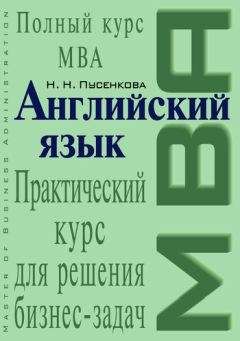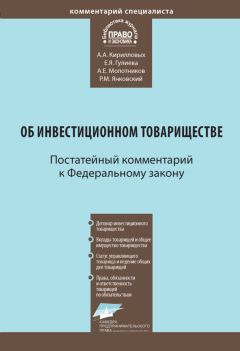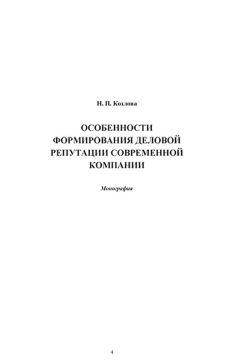Ознакомительная версия.
Часть инвесторов после взаимоисключающих выводов инвесткомпаний находятся в смятении, отмечает вице-президент отдела продаж «Уралсиба» Александр Захаров: «Те, кто решил следовать рекомендациям Deutsche UFG, будут использовать для этого усиление „префов“ „Транснефти“, а кто хочет купить, наоборот, будут использовать проседания рынка». Сам «Уралсиб» считает «префы» «Транснефти» недооцененными, а пятничное снижение котировок – «отличной возможностью для покупки бумаг».
Вице-президент «Транснефти» Сергей Григорьев говорит, что в его компании «не отслеживают цену привилегированных акций и не знают, кто является миноритарным акционером компании».
Источник: Ведомости, 28.03.06
Lesson 34
Equity Research Report
Read and translate the text and learn terms from the Essential Vocabulary.
– Aeroflot, Russia’s leading airline, offers attractively valued exposure to strong GDP growth in Russia and increasing disposable incomes.
– We raise our target price for Aeroflot by 42% from $0.7 to $1.0, following the publication of unaudited 9MO3 IAS financials that demonstrated better cost control and working capital management than forecast, and slightly higher than expected revenue growth. We upgrade our recommendation from Hold to Buy.
– If valued at our new target price of $1.0, Aeroflot would still trade at significant discounts to emerging market (EM) and developed market (DM) peers – 48% and 49%, respectively, on 2004 P/E, and 42% and 18% on 2004 EV/EBITDA.
– Aeroflot’s operating performance in 2003 showed resilience to the negative global air transport environment caused by SARS and the war in Iraq. We expect profits of more than $10 million for Aeroflot in 2003, while most DM airlines are expected to report losses.
– Aeroflot will have a new fleet of 27 foreign aircraft – 18 Airbus and 9 Boeing – by year-end 2004. The rationalization of aircraft types in the fleet will reduce maintenance costs and make the company more competitive among foreign peers on international routes.
– Larger Airbus models along with six new IL-96 aircraft will by year-end 2004 boost Aeroflot’s passenger capacity by 17.7% versus 2003, to 29.1 billion available seat kilometers (ASK).
– The company will strengthen its market position relative to domestic competition when it upgrades its fleet of regional aircraft, while grounding outdated aircraft.
– We introduce upgraded projections for Aeroflot’s financials through to 2010 based on 9MO3 unaudited IAS financials and full-year 2003 operating data produced by the company in mid-January.
– Given the recent performance of Aeroflot’s shares, which have gained 44% on a 3-month basis – outperforming the local market by 29% – we see the upside for Aeroflot shares over the next few months being limited to 20%.
Summary Valuation of Aeroflot
Dividend 2003 announcement – expected at the end of April
Publication of 2003 full-year IAS on June 1—10, 2004
New aircraft leased or purchased, especially regional aircraft
Aeroflot’s monthly publications of 2004 operating results – domestic and international passenger traffic performance are areas to watch
– Quarterly publications of unaudited IAS financials
– Lease of cargo carriers. This would indicate that Aeroflot is looking to improve its position in the air cargo market.
We have revisited our forecasts and assumptions for Aeroflot following publication of its 9MO3 unaudited IAS results and full-year 2003 operating data, which demonstrated a higher than expected increase in passenger and cargo turnover, and a higher load factors. We have raised our annual forecasts for Aeroflot’s passenger traffic for 2004—2010 by 2% on average, and we increased our estimates for average international and domestic passenger yields by 0.1 US cents. We have made adjustments to our forecast of the company’s operating costs; specifically, we have reduced our projections for depreciation and personnel.
Our expectation for 2004E EBITDA growth is 22%, and our EBITDA forecast is $296 million (EBITDA margin 16.7%). We expect Aeroflot’s earnings to reach $ 140—150 million, up 22—30% on expected net income of $114 million in 2003.
Aeroflot has outperformed the RTS by 24% over the past 12 months. In the past three months the stock price has gained around 43% on the back of positive changes in the company’s Board of Directors (with three representatives of NRB being elected to the board), positive operating results for 1H03 and 9M03, and the foreign fleet upgrade moving in line with schedule.
Aeroflot is presently the best valued among its GEM peers. Despite SARS and the Iraq war, it has sustained stable, though moderate, operational growth in 2003. However, these positives are not yet fully reflected in its valuations.
Aeroflot shares deserve to be traded at, on average, 30—40% discounts to GEM peers on future P/E and EV/EBITDA due to company specific risks. Currently, the discounts are much wider leaving room for some 15—20% price upside.
Elsewhere, Lan Chile and Thai Airways are being offered as buying opportunities to equity investors. Presently, both airlines are valued higher than Aeroflot. Thai Airways is considered to be a play that provides exposure to the unwinding Thai economy and the expected increase in tourism in the region. We argue that SARS and chicken flu are likely to make South-Asian destinations, including Thailand, less attractive, at least in the near future.
Lan Chile is considered to be attractive based on the recovery in the local and international economy, a stable peso, which should boost passenger traffic and import, and its international expansion strategy. We consider Aeroflot close to Lan Chile in terms of high attractiveness as an investment opportunity. Different brokers suggest 14—25% upside for Lan Chile shares, which again underscores our bullish call on Aeroflot. Lan Chile is expected to increase its traffic by 2.6% in 2004, which is significantly lower than Aeroflot’s projected traffic increase of 11.2% in 2004.
Overall, we do not believe that Aeroflot’s discounts to GEM and DM peers are justified by the expected growth rates of relative air transportation markets. Indeed, the Chinese air transport is expected to grow at the fastest rate in 2003—2022 (CAGR 8%), according to Boeing forecasts, while it expects the North American market to grow by 4.1%, the Latin American by 7.3%, and the European by 4.5%. We forecast that the Russian air transport industry will grow by 7.4% (CAGR 2003—2022), which is on a par with the expected Latin American growth and only slightly below the expected Chinese growth. Therefore, Aeroflot deserves to be valued at least on a par with Lan Chile and Thai Airways, i.e. to trade 20—40% higher than it presently trades.
At out target price of $ 1,0, Aeroflot would still trade at significant discounts to GEM and DM peers, which underscores the attractiveness of Aeroflot shares at current price levels and leaves room for further stock price appreciation.
Enterprise Value Compared
We compared Aeroflot with GEM and DM peers with EV below $4 billion. Aeroflot’s EV is close in size to Hainan Airlines, Lan Chile, Malaysian Airlines and Finnair.
Market data shows that investors value Aeroflot below the average of 7.0 EV/EBITDA 2004E at which the selected group of airlines trade.
At the same time, we note positively that Aeroflot operates at EBITDA margin of 16%, which is close to the average for the group of selected companies. It is worth noting that DM airlines operate, on average, at a 9% EBITDA margin, while GEM peers enjoy a 20% average.
Equity investors value the future earnings of the main Asian airlines higher than, or on a par with, those of the European majors. This is not surprising given the booming emerging Asian economies and moderate economic growth of the Euro-zone countries.
Aeroflot’s future earnings are valued the lowest among global peers, on a par with KLM and Thai Airlines. The fact that Aeroflot’s future earnings are presently valued 56% below the GEM average underscores the attractiveness of the stock and our Buy take on it.
Regardless of the way in which return on capital employed is calculated – with or without financial leases included in the net debt position – Aeroflot produces an economic value that allows for ROCE to be higher than its cost of capital, which supports our positive view on the company.
Methods of Target Price Valuation
We used three methods to determine Aeroflot’s target price:
1. Present and future multiples relative to international peers;
2. DCF;
3. EBITDA multiple.
We have already demonstrated that the company is undervalued by more than 40% compared with GEM peers on this year’s multiples.
In our DCF model for Aeroflot for 2004—2010, we use a WACC of 14.3% as a discount rate. The DCF model built for the base-case scenario values the company at $1.20 per ordinary share for the end of 2004. This is our maximum for the fair value. Under DCF, 61% of the present EV comes from the perpetuity period.
Aeroflot DCF Model (Base Case Scenario)
For the WACC calculation, we used methodology, which determines the stock specific equity risk premium based on corporate governance rating (CGR) (1 being the lowest, 10 the highest). Our CGR for Aeroflot is 5.2. This compares with a 6.2 CGR for Baltika, 8.2 for Wimm-Bill-Dann, and 6.5 for SeverstalAvto. For the risk-free rate, we used a 3-month moving average on the mid yield on Russia’s 10-year sovereign bonds.
Another valuation method we used is an EV/EBITDA multiple-based calculation. As GEM peers have an average 2005E EBITDA multiple of 7.4, we use 7.0 for Aeroflot’s 2008E EBITDA multiple. The fair value derived from a 2008E EV/EBITDA multiple of 7.0 is $0.85.
We take $1.0 as our 12-month target price, which implies an 18% upside from the current price level.
Source: N. Zagvozdina, V. Tskhovrebov, Renaissance Capital, Aeroflot:
Taking off, Feb. 2004, (excerpt), www.aeroflot.ru
1. target price – целевая (базовая) цена
2. working capital – оборотный капитал
3. Hold – рекомендация «держать»
4. projection n – проектировка, оценка будущего уровня
5. operating cash flow (OpCF) – операционный денежный поток
6. actual (A) a – фактический (в статистических таблицах)
7. estimate (E) n – оценка (в статистических таблицах)
8. forecast (F) n – прогноз (в статистических таблицах)
9. Committee on Uniform Securities Identification Procedures (CUSIP) – Комитет по единым процедурам идентификации ценных бумаг (США)
10. International Securities Identification Numbers (ISIN) – международные идентификационные номера ценных бумаг
11. not available (n/a) – нет данных (обычно употребляется в таблицах)
12. lease n – аренда
lease v – арендовать
13. load n – груз, бремя, нагрузка, загрузка
load v – грузить, нагружать, заряжать, обременять
14. Russian Trading System (RTS) – Российская торговая система
15. schedule n – опись, список, перечень, расписание; таблица, график
schedule v – составлять список, включать в расписание, назначать, намечать, планировать
16. par n – равенство, паритет, номинал
on (at) par – по номиналу, наравне
17. Euro-zone – зона евро
18. base-case scenario – базовый сценарий
19. unleveraged a – без использования заемных средств
20. terminal value – конечная (терминальная) ценность
21. beta – коэффициент бета (показатель относительной неустойчивости цен акций)
Exercise 1. Answer the following questions.
1. Why did Renaissance Capital raise their target price for Aeroflot? 2. Was Aeroflot’s 2003 operating performance affected by the negative global air transportation environment? 3. How will its fleet upgrade affect Aeroflot’s market position? 4. What is the upside potential of Aeroflot, according to Renaissance Capital? 5. What are the key price drivers of Aeroflot? 6. What are the justified discounts for Aeroflot shares? 7. What are the GEM peers that are used for comparison with Aeroflot? 8. What methods did Renaissance Capital use to determine Aeroflot’s target price? 9. What methodology did it use for WACC calculation?
Ознакомительная версия.





